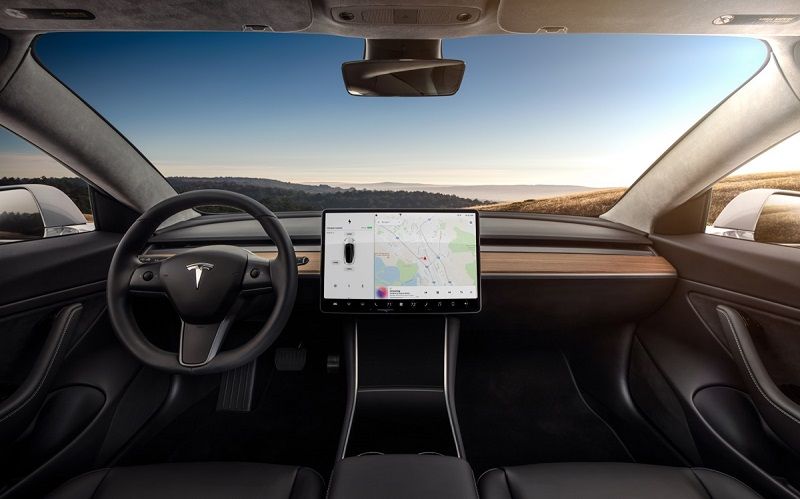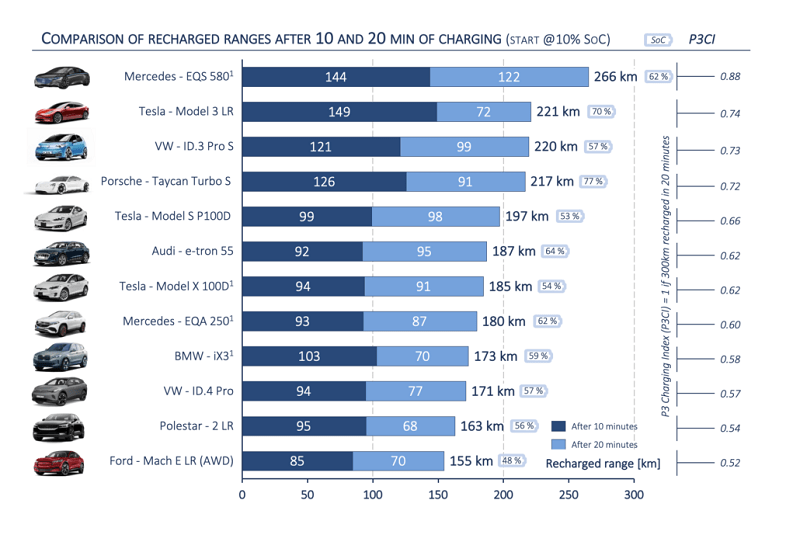German electric cars are winners in terms of performance
The latest analysis of the models on sale, according to an index that relates real journeys and charging times to the column, rewards German cars.

What’s the Charging Index and how is it obtained?
They call it charging index and it’s a value obtained by verifying real charging times and electric car journeys. The latest rankings according to this index reward the brand new Mercedes EQS, queen of Stuttgart for electrics as it has always been S-Class, among the great classic, thermal sedans. Tesla, with its Model 3 Long Range and Volkswagen, also on the podium, with ID.3 at maximum battery capacity.
The Charging Index allows you to evaluate both the high charging performance, often boasted by many new premium models and given by the advanced systems on board, and the actual low energy consumption during the use of the car, which is influenced by something else. It is therefore a good indicator of “performance” when calculated objectively and on an equal footing between models. A kind of “test of the nine” applied to the aspect of refills that represent a fundamental element of the choice and above all in the use of a high-level electric car.

20 minutes 300 km
The reference taken as the ideal target in the index is the value 1, assignable when charging in twenty minutes just enough to then make 300 kilometers. This value is consistent with today’s technological potential of the best electric cars, obviously over the years changes and increases are expected due to technological developments. The early 2021 ranking sees Mercedes EQS at 0.88 followed by other premium travel and performance-oriented electrics. Of course, small low-cost generalist cars are not included in the Top10, generating indices below 0.5 having city car equipment and performance.
For consumption data, those of ADAC Eco Test (a special motorway cycle, in addition to WLTP) were calculated. While net capacity and dc column charge curves are calculated by P3 Automotive, considering the range from level 10% to 80%. The analysis of the curves allows various technical considerations on the margin, such as the one that sees the Tesla Model 3 Long Range drop drastically, after a very valid start, while an Audi model such as the Q4 e-tron “holds” high value for much longer, during its recharges. In any case, it is difficult to point out and extend to the many cases proposed by the practice of use. In the reference taken (20×300) the Mercedes EQS wins both thanks to the high net battery capacity (107.8 kWh) and for the real consumption aided by its good aerodynamic coefficient and its elaborate shapes, in the front area.

In terms of charging power, the EQS boasts a peak of over 200 kW and a very good average, of 164 kW even on a 400V basis. Precisely the jump of the systems towards 800V can generate different rankings over the next few years, with various cars not yet considered in this analysis and better indices. To date, it is already impressive to see how the first in the ranking of 2021 can turn 266 kilometers, after only twenty minutes to the column of maximum power.
Just a year ago, the winner Porsche Taycan scored fifty kilometers less. By committing to compare different levels and times in recharges, you can notice more profitable cars when the charge is very short, or the opposite, as the case may be. Among the cars at the bottom of the standings, Polestar 2 LR and Ford Mach-E LR, which in the twenty minutes did not recharge for more than 163 and 155 km respectively.
Although the target of users has yet to evolve, along with the cars themselves and the infrastructure that maximizes these maximum performances, the message is that now German industry is among those best placed, in Europe and beyond.
In Collaboration with:









